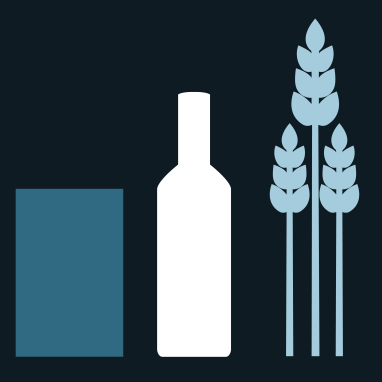Consumer trends: Low FODMAPS foods a healthy marketing opportunity
By Joe Lederman
FoodLegal Lawyers and Consultants
© Lawmedia Pty Ltd, October 2014
Researchers from Monash University have recently announced the introduction of an upcoming Low FODMAP Certification Program. In December 2013, a FODMAP Friendly Certification program was launched. In this article, we look at the meaning of FODMAPS.
What are FODMAPS?
The term “FODMAPS” is a trademarked term[i] referring to a group of short-chain carbohydrates, previously considered unrelated, which have been linked with gastrointestinal symptoms when consumed.
The term is an acronym coming from the carbohydrates that make up the group: Fermentable Oligo-saccharides, Disaccharides, Mono-saccharides and Polyols.
“FOLFAP” is a roughly equivalent term developed by Food Standards Australia New Zealand (FSANZ), standing for: Fermentable oligosaccharides, lactose, fructose and polyols.
The terms can be broken down as such:
- Fermentable: “the process through which gut bacteria degrade undigested carbohydrates to produce gases” (according to Monash University)
- Oligosaccharides: Fructo-oligosaccharides (wheat, rye, onions, garlic); and Galacto-oligosaccarides (legumes, lentils)
- Disaccharides: lactose (milk, soft cheeses, yogurts)
- Mono-saccharides: fructose (honey, apples)
- Polyols: sugar polyols, found in some fruits and vegetables and used as artificial sweeteners[ii].
FODMAPs has become more commonly used and more recognisable than FOLFAPS. FSANZ also contends that the key difference is that “FOLFAPs is more specific in that the literature identifies lactose as the only disaccharide of interest and fructose as the only monosaccharide of interest”[iii].
What does this all mean?
Research suggests that the consumption of high FODMAP foods can contribute to functional gastrointestinal disorders (FGID) such as irritable bowel syndrome (IBS). Many studies have commenced looking into whether a low FODMAPs diet can help to reduce FGID.
Individuals on a low FODMAP diet are limited in their consumption of certain types of fruits and vegetables, dairy and gluten products, among others. A table produced by Monash University shows some high and low FODMAP items.
While the distinction between high and low FODMAP food items can seem arbitrary, the reasons for including these specific carbohydrates together is due to “their tendency to be poorly digested and absorbed in the small intestine” leading to fermentation in the large intestine[iv].
The relevant carbohydrates occur naturally in some food items and are added in others for various technological and nutritional reasons[v].
Why FODMAPs are important to avoid for specific people
For people with IBS, research is indicating that avoiding high FODMAP food items can be an effective way of managing symptoms.
However, researchers from Monash University are emphasising the importance of this not becoming another fad diet – for people without IBS, a removal of FODMAPs from their diet could create other negative consequences.
“People who are healthy and do not have symptoms should not place themselves on a strict low FODMAP diet. A low FODMAP diet should not be viewed as ‘good for digestive health’ and indeed a diet that restricts FODMAP will also restrict ‘prebiotic’ intake (fructans and galacto-oligosaccharides) which may, in turn, result in changes in the luminal bacterial populations”(Jane Muir and Peter Gibson, The Emerging Story of Dietary Fibre and Gut Health, Food Australia August-September 2014)
New Monash University Low FODMAP Certification
Monash University has conducted research on the long-term impact of a low FODMAPs diet. Its new certification program aims to assist people who react to high FODMAPs foods to be able to readily identify those products which are considered “Low FODMAPs”.
The FODMAP Friendly Logo
The FODMAP Friendly Logo was launched in December 2013 as an ACCC-approved, audited and globally-registered certification program for Low FODMAPs food products.
For a food company to use the label, their specific food products must meet strict standards and undergo independent analysis. Annual licensing fees apply and products are subject to random audits.
A product will be permitted to display the logo if certain conditions, set out on www.fodmaps.com are met:
- the Applicant meets the Approved User Requirements;
- the Applicant’s proposed product, following testing, meets the FODMAP Friendly Guidelines;
- the Applicant demonstrates that it will comply with the requirements of the Rules and the FODMAP Friendly Guidelines; and
- the Licensor is satisfied that the Applicant’s proposed:
- Use of the Trade Mark in connection with the Proposed Product; and
- Supply or promotion of the Proposed Product
- will not mislead or deceive the public, or breach any provision of the Competition and Consumer Act 2010.
[i] Trademarked by Sue Shepherd
[ii] From Monash: http://www.med.monash.edu/cecs/gastro/fodmap/description.html
[iii] http://www.foodstandards.gov.au/code/proposals/documents/P242%20FSMP%20FAR%20SD1%20Comp%20Assess.pdf
[iv] http://www.foodstandards.gov.au/code/proposals/documents/P242%20FSMP%20FAR%20SD1%20Comp%20Assess.pdf
[v] http://www.foodstandards.gov.au/code/proposals/documents/P242%20FSMP%20FAR%20SD1%20Comp%20Assess.pdf
This is general information rather than legal advice and is current as of 30 Oct 2021. We therefore recommend you seek legal advice for your particular circumstances if you want to rely on advice or information to be a basis for any commercial decision-making by you or your business.
